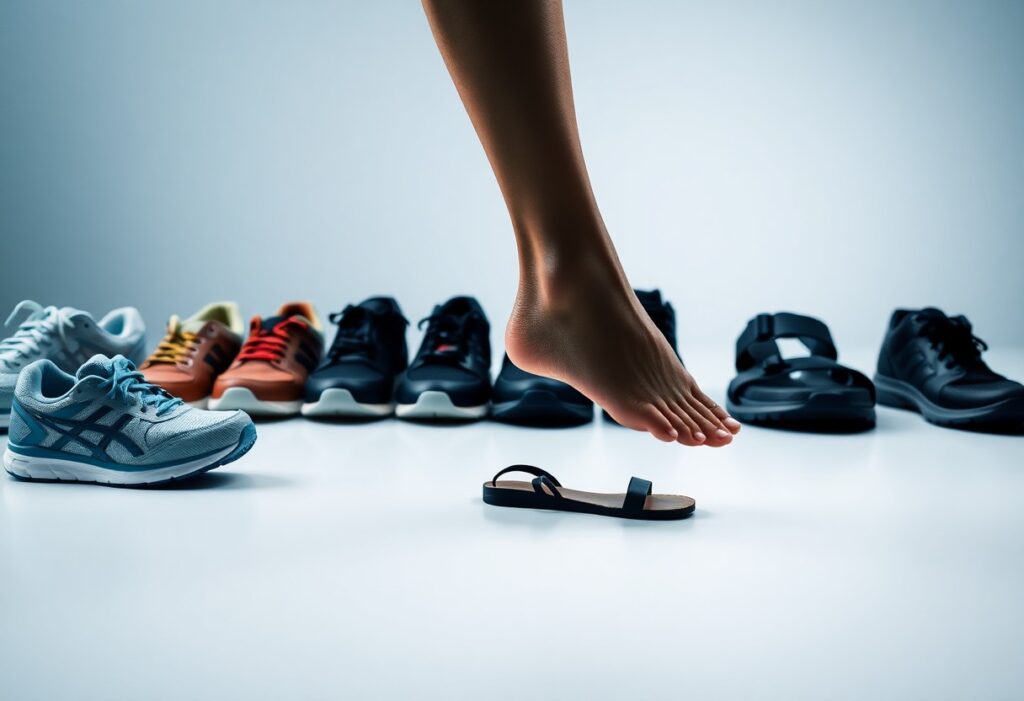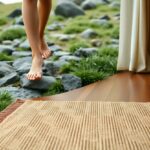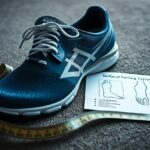
As you walk, the choice of footwear can profoundly influence your foot health and overall comfort. Many individuals mistakenly assume that shoes with additional cushioning and support are the best solutions for foot discomfort; however, conventional footwear often leads to more harm than benefit. Dr. Alissa Kuizinas, a renowned podiatrist from Massachusetts, strongly recommends barefoot shoes or minimalistic footwear, asserting that these options can significantly contribute to stronger and healthier feet. By selecting shoes that allow your feet to function more naturally, you can significantly decrease the likelihood of developing foot issues while enhancing your overall foot wellness.
Identifying the Detrimental Effects of Traditional Footwear on Your Foot Health
While traditional shoes may provide temporary relief from foot pain, they often exacerbate existing conditions and introduce new complications, as emphasized by Dr. Alissa Kuizinas. She highlights that the $133 billion shoe industry frequently prioritizes aesthetics and profit over authentic foot health, leading to designs that can constrict and weaken your feet over time. This reliance on conventional footwear creates a harmful cycle that ultimately undermines your foot health and can result in long-term complications.
Assessing the Shoe Industry’s Misguided Approach to Foot Health Solutions
The core of this issue lies in the shoe industry’s misguided strategy for addressing foot health, which typically focuses on adding excessive cushioning, support, and rigid construction without tackling the underlying causes of discomfort. This approach can foster a false reliance on shoes that may actually harm your foot health over time, leading to a range of complications that could have been prevented with better design principles.
Identifying the Design Flaws in Conventional Footwear
Many traditional shoe designs feature narrow toe boxes, rigid soles, and excessive cushioning that can impede natural foot movement, resulting in weak and dysfunctional feet. Dr. Kuizinas emphasizes that footwear should protect your feet from external elements rather than restrict their natural movement. An ideal shoe design should prioritize natural foot function and incorporate minimalist features, such as wider toe boxes, flexible and flat soles, and minimal cushioning to encourage optimal foot health.
By choosing barefoot shoes or minimalistic footwear, you can effectively strengthen your feet and enhance your overall foot well-being. Dr. Kuizinas advocates a philosophy of utilizing as little shoe as possible, which allows your feet to function naturally and move freely, an essential aspect of maintaining optimal foot mechanics.
Understanding the Critical Importance of Natural Foot Movement
Footwear that restricts your foot’s natural movement can lead to a multitude of foot problems and discomfort. It is essential to evaluate how your shoe selections impact your overall foot health and comfort levels, enabling you to make informed choices that promote well-being.
Assessing the Influence of Footwear on Your Foot Mobility
To fully grasp the effect of shoes on your foot’s mobility, it is crucial to analyze the specific designs and characteristics of your chosen footwear. Traditional shoes often include cushioning and support features that can, ironically, hinder your foot’s natural movement, leading to weak and dysfunctional feet over time. This restriction can prevent your feet from developing the necessary strength and flexibility essential for optimal functioning.
Understanding the Advantages of Allowing Natural Foot Mobility
The advantages of enabling your feet to move naturally are extensive, as strong feet are vital for overall foot health. By selecting minimalistic shoes or barefoot footwear, you empower your feet to perform as intended, fostering strength and resilience.
Movement is crucial for developing strong feet. When constrained by conventional footwear, you risk encountering various foot issues and discomfort. Conversely, embracing minimalistic shoes or barefoot options can significantly enhance your foot health by allowing for natural movement and promoting strength-building. By making informed footwear choices, you can reduce your risk of developing foot problems while improving your overall foot wellness.
Exploring the Concept of Functional Footwear for Optimal Health
Understanding functional footwear is essential, as these shoes prioritize both foot health and natural movement. Functional shoes are specifically designed to allow your feet to operate as they were intended, eliminating the need for excessive support or confinement.
Defining Functional Footwear and Its Essential Characteristics
Through research and experimentation with various shoe styles, it becomes apparent that functional footwear possesses distinct characteristics, including a wide toe box, flat and flexible soles, as well as minimal cushioning and support. These features enable your feet to move freely and naturally, promoting stronger and more capable foot mechanics.
The Numerous Benefits of Functional Footwear for Enhancing Foot Health
Wearing functional shoes offers a plethora of benefits, such as increased foot strength, a reduced risk of injury, and improved overall foot health. These shoes allow your feet to function as they were designed to, leading to stronger feet and better balance in your daily activities.
Functionally designed footwear is crafted to support your feet without imposing unnecessary restrictions, enabling them to move and flex naturally. This design philosophy fosters optimal foot health and diminishes the likelihood of developing foot ailments. By choosing functional shoes like barefoot shoes or minimalistic options, you actively promote healthy foot function and minimize the risk of foot pain and injury. Transitioning to functional footwear may require a gradual adjustment, but the long-term benefits for your foot health are invaluable.
Key Features to Prioritize in Functional Footwear
To achieve optimal foot health, it is essential to seek out shoes that possess certain key attributes. Important features to consider include:
- Wide toe box
- Flat and flexible soles
- Minimal cushioning and support
Being attentive to these characteristics will greatly assist you in selecting shoes that promote healthy foot function and support.
Recognizing the Importance of Wide Toe Boxes and Flexible Soles in Footwear
A vital feature of functional footwear is a wide toe box, which allows your toes to spread naturally. This design prevents toe jamming and other discomfort-related issues that could lead to chronic foot pain and complications.
Understanding the Value of Minimal Cushioning and Support in Footwear
In addition to a wide toe box, functional shoes should also have minimal cushioning and support. This design element allows your feet to move naturally while strengthening foot muscles, thus decreasing the risk of foot issues.
It is important to emphasize that minimalistic footwear, such as barefoot shoes, can significantly enhance your foot health by allowing your feet to function freely. By selecting shoes with minimal cushioning and support, you can bolster muscle strength in your feet and lessen the chances of injuries. This strategic choice not only improves your overall foot health but also lowers the likelihood of experiencing chronic pain. Therefore, prioritizing footwear that permits your feet to move naturally without excessive cushioning or support is crucial.
Transitioning to Functional Footwear: A Comprehensive Guide
Having recognized the significance of functional footwear, it’s time to begin your transition. Contrary to the common belief that more cushioning and support equate to greater comfort, you should aim for minimalistic shoes or barefoot shoes that facilitate your feet’s natural functioning.
Practical Tips for a Smooth Transition to Functional Footwear
Despite any initial hesitations, start integrating functional shoes into your daily routine by following these practical recommendations:
- Begin with short walks and gradually increase your distance.
- Choose shoes that feature a wide toe box and flat soles.
- Opt for minimal cushioning and support.
The key is to allow your feet ample time to adjust to the new footwear while simultaneously strengthening the muscles in your feet.
Highlighting the Importance of Patience During Your Transition
Transitioning to functional footwear requires patience and a gradual approach. Shoes that are overly minimalist can cause discomfort and pain if your feet are not accustomed to them. Taking things slowly is crucial, allowing your feet to acclimate to the new footwear.
Footwear options such as barefoot shoes or minimalistic shoes can be incredibly beneficial for your foot health, but it’s essential to introduce them gradually. Overuse or improper sizing can lead to injuries or persistent discomfort. The ultimate goal is to strengthen your foot muscles while improving your overall foot health, so patience is key, and rushing through the transition is not advisable. The rewards will be substantial; anticipate enhanced balance, reduced pain, and stronger feet.
Fostering Strong and Functional Feet Through Thoughtful Footwear Choices
Even in a society where shoes with excessive cushioning and support dominate the market, you can cultivate strong and functional feet by carefully selecting your footwear.
Examining the Connection Between Foot Strength and Overall Health
Alongside various health factors, foot strength plays a crucial role in your overall well-being, significantly impacting your balance, posture, and movement abilities.
How Functional Footwear Facilitates the Development of Strong Feet
Functionally designed shoes characterized by a wide toe box, flat and flexible soles, and minimal cushioning are key to developing strong feet, as they enable natural movement.
Indeed, wearing functional shoes or barefoot shoes can greatly assist in building stronger foot muscles and enhancing your overall foot health. By permitting your feet the freedom to move and function naturally, you can minimize the risk of foot problems while optimizing your balance and stability. As you transition to minimalistic shoes, you should expect improvements in your walking technique and overall sense of well-being.
By taking proactive steps in managing your foot health, you can select shoes that support your feet’s natural functions rather than hinder them. Choosing barefoot shoes or minimalistic options that allow your feet to operate naturally will encourage strength and stability over time. Begin your journey by seeking footwear with a wide toe box, flat and flexible soles, and minimal cushioning and support, while being patient as you transition to a more natural walking style.
The Article A Podiatrist’s Guide to How Shoes Affect Your Foot Health appeared first on My Shoes Finder
The Article How Shoes Impact Your Foot Health: A Podiatrist’s Insights Was Found On https://limitsofstrategy.com
The Article Shoes and Foot Health: Insights from a Podiatrist First Appeared ON
: https://ad4sc.com





Comments are closed